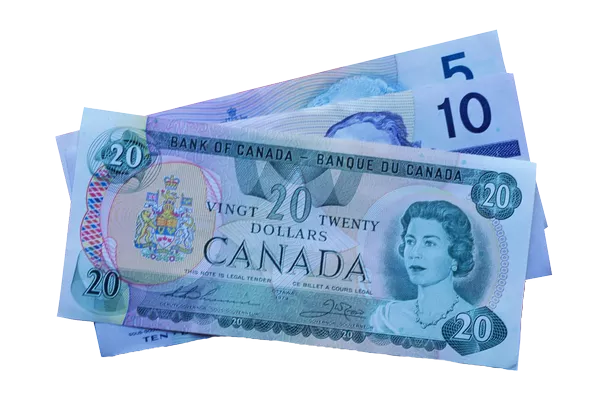The Canadian Dollar (CAD) stands as a testament to Canada’s economic stability, cultural richness, and global significance. In this comprehensive exploration, we delve into the history, symbols, codes, and denominations of the Canadian Dollar, unraveling the story behind one of the world’s most recognized and resilient currencies.
Canadian Dollar Currency History:
Early Currency Systems:
Canada’s early history saw a diverse range of currencies, including those issued by French and British colonies. The introduction of the Canadian pound in 1841 marked the first step towards a unified currency system. However, the use of various currencies persisted until the establishment of the Canadian Dominion in 1867.
Dominion Notes and the Birth of the Dollar:
The Dominion of Canada introduced its own currency—Dominion Notes—in 1870, featuring denominations in dollars and cents. The term “dollar” was adopted from the Spanish dollar widely used in North America. The Canadian Dollar officially became the country’s sole currency in 1871.
The Gold Standard and World Wars:
Canada adopted the gold standard in 1897, linking the value of the Canadian Dollar to a fixed quantity of gold. World War I and II prompted Canada to abandon the gold standard temporarily, facilitating economic flexibility during times of global upheaval.
Modern Era and the Fiat System:
Post-World War II, Canada transitioned to a fiat currency system, where the value of the Canadian Dollar is not directly tied to physical commodities. This shift allowed for greater economic maneuverability and stability in the face of changing global dynamics.
Canadian Dollar Currency Symbol:
The Canadian Dollar is represented by the symbol “$,” a universally recognized sign denoting various currencies, including the United States Dollar. To distinguish it from other dollar-denominated currencies, the addition of the letter “C” was proposed. The resulting symbol “$C” or “C$” is widely used to represent the Canadian Dollar in financial contexts.
Canadian Dollar Currency Codes:
In the realm of international finance, currency codes provide a standardized way to denote different currencies. The ISO code for the Canadian Dollar is “CAD,” derived from its official name. This three-letter code is used in financial transactions, currency exchange platforms, and international trade to unequivocally identify the Canadian Dollar.
Canadian Dollar Denominations:
Banknotes:
Canada’s banknotes showcase a harmonious blend of historical figures, iconic symbols, and vivid imagery. As of the latest redesign in 2018, the denominations of Canadian Dollar banknotes are:
$5 Bill: Featuring the portrait of Sir Wilfrid Laurier, Canada’s seventh Prime Minister, and the Canadarm2 robotic system.
$10 Bill: Showcasing Viola Desmond, a trailblazing Black Canadian businesswoman, and the Canadian Museum for Human Rights.
$20 Bill: Highlighting the accomplishments of the Famous Five, key figures in the women’s suffrage movement, and the landscape of the Cabot Trail.
$50 Bill: Commemorating the achievements of civil rights activist and businesswoman Viola Desmond, and featuring the Canadian Coast Guard research icebreaker.
$100 Bill: Honoring the contributions of Sir Robert Borden, Canada’s eighth Prime Minister, and depicting the famous medical innovation of insulin.
Coins:
Canadian coins, known for their durability and distinct design, come in various denominations, including:
$1 Coin (Loonie): Featuring the image of a common loon, this coin earned its colloquial name “Loonie” from the bird depicted on one side.
$2 Coin (Toonie): Introduced in 1996, the Toonie features an image of a polar bear, symbolizing Canada’s Arctic region.
25¢ Coin (Quarter): Commonly used in everyday transactions, the quarter showcases various images, including the caribou, the Bluenose schooner, and others.
10¢ Coin (Dime): Displaying the image of the Bluenose schooner, the dime is an integral part of Canadian coinage.
5¢ Coin (Nickel): Featuring the image of a beaver, an iconic symbol in Canadian culture, the nickel has been in circulation since 1858.
See Also:Why is Queen Elizabeth on Canadian Money? [Revealed!]
The Evolution of Canadian Currency Design:
Thematic Elements:
Canadian banknotes and coins often incorporate thematic elements that reflect the nation’s history, cultural diversity, and natural beauty. From images of prominent figures to depictions of iconic landmarks, each element is carefully chosen to represent Canada’s multifaceted identity.
Accessibility and Innovation:
Canadian currency is designed with accessibility in mind. Banknotes include features such as raised ink, Braille, and large numerals to assist those with visual impairments. The use of innovative security features, including holographic strips and transparent windows, enhances the durability and anti-counterfeiting measures of Canadian banknotes.
Security Features:
To safeguard the integrity of the Canadian Dollar, banknotes are equipped with advanced security features. These features include holographic strips, color-shifting ink, raised printing, and transparent windows. The incorporation of cutting-edge technology ensures that Canadian currency remains secure and resistant to counterfeiting.
Conclusion:
The Canadian Dollar, with its rich history, distinct symbols, and innovative design, stands as a symbol of Canada’s economic resilience and cultural diversity. From the early days of Dominion Notes to the modern era of polymer banknotes, the Canadian Dollar has undergone a remarkable evolution, reflecting the nation’s growth and adaptability.
As an internationally recognized currency, the Canadian Dollar continues to play a vital role in global finance and trade. Its unique symbols, codes, and denominations contribute to a vibrant and dynamic representation of Canada’s identity on the world stage. Whether in the form of banknotes featuring iconic figures or coins celebrating the nation’s natural beauty, the Canadian Dollar is a tangible expression of Canada’s past, present, and future.


